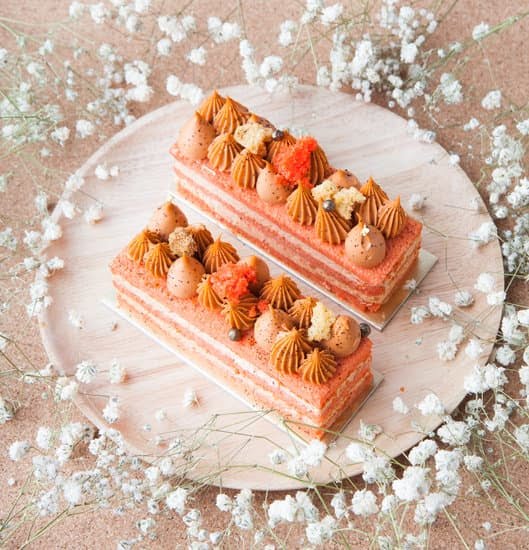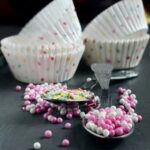White icing is an essential component of cake decorating that can elevate the appearance and taste of any cake. A smooth, white surface provides a blank canvas for endless creative possibilities, allowing bakers to showcase their artistry and bring their vision to life. In this article, we will delve into the significance of white icing in cake decorating and explore the various techniques, tips, and variations that can help you achieve professional-looking results.
As the foundation of cake decoration, white icing serves as a base for intricate designs and patterns. Its ability to create a flawless canvas sets the stage for other decorative elements such as piping, fondant, or sugar flowers. White icing not only adds a touch of elegance but also enhances the overall aesthetic appeal of a cake.
To master the art of white icing, it is crucial to understand its basic ingredients and measurements. With just a few simple ingredients like confectioners’ sugar, butter or shortening, vanilla extract, and milk or water, you can whip up a batch of delicious homemade white icing. In the next section of this article, we will break down these components and guide you through step-by-step instructions on how to make white icing from scratch.
Whether you are a beginner or an experienced baker looking to enhance your skills, mastering the consistency of white icing is key to achieving professional-looking results. We will provide you with valuable tips and techniques for achieving that flawless finish by avoiding common pitfalls such as cracking or melting issues. Additionally, we’ll explore how different flavor variations can add exciting nuances to your creations.
With this comprehensive guide to white icing recipe for cake decorating, you will not only learn how to achieve smooth and perfect consistency but also discover advanced techniques such as using white icing for sculpting and modeling intricate designs. We will also address troubleshooting common issues that may arise during the decorating process while providing solutions to prevent them.
Your journey towards becoming an expert decorator doesn’t end there – we will also share tips on storing and preserving white icing to extend its shelf life, ensuring you have the perfect consistency whenever you need it. So, let’s dive in and explore the world of white icing recipe for cake decorating, and take your sweet creations to new heights.
The Basics of White Icing
When it comes to cake decorating, white icing is an essential component that provides the perfect canvas for various designs and patterns. Understanding the basics of white icing, including its ingredients and measurements, is crucial in achieving a beautiful and delicious finished product.
To make white icing from scratch, you will need just a few simple ingredients. The main components of white icing are powdered sugar, butter or shortening, vanilla extract, and milk or water. The powdered sugar acts as the base for the icing, providing sweetness and structure. Butter or shortening adds richness and creaminess to the icing, while vanilla extract enhances the flavor. Finally, milk or water is used to adjust the consistency of the icing.
In terms of measurements, a basic recipe for white icing typically uses about 4 cups of powdered sugar, 1/2 cup of butter or shortening, 2 teaspoons of vanilla extract, and 2-4 tablespoons of milk or water. However, these measurements can be adjusted to achieve your desired consistency and taste. Keep in mind that adding more liquid will yield a thinner consistency, while adding less liquid will result in a thicker icing.
It’s important to note that there are different variations of white icing recipes depending on personal preferences and dietary restrictions. For example, some recipes may call for cream cheese instead of butter or shortening for a tangier flavor. Additionally, there are vegan-friendly options available that use plant-based butter substitutes. Experimenting with different ingredient ratios and substitutions can help you find your perfect white icing recipe.
| Ingredients | Measurements |
|---|---|
| Powdered Sugar | 4 cups |
| Butter or Shortening | 1/2 cup |
| Vanilla Extract | 2 teaspoons |
| Milk or Water | 2-4 tablespoons |
Whether you’re a beginner or experienced decorator, understanding the basics of white icing is essential. By knowing the right ingredients and measurements, you can create an icing that not only tastes delicious but also provides the perfect consistency for decorating.
Experimenting with variations and substitutions can result in a unique white icing recipe that suits your personal preferences. In the next section of this article, we will provide step-by-step instructions on how to make white icing from scratch.
Step-by-Step Instructions
Gathering Your Ingredients
To make white icing from scratch, you will need a few basic ingredients. Gather the following:
- Confectioners’ sugar: Also known as powdered sugar or icing sugar, this is the main ingredient for making white icing.
- Unsalted butter: Make sure it is softened to room temperature before using.
- Vanilla extract: This will add a hint of flavor to your white icing. Use pure vanilla extract for the best results.
- Milk or heavy cream: This will help achieve the desired consistency of your icing.
- Optional ingredients: If you want to experiment with different flavors, you can add other extracts such as almond or lemon extract.
Mixing the Ingredients
Once you have gathered all your ingredients, follow these step-by-step instructions to make white icing:
- In a mixing bowl, combine 1 cup (120g) of confectioners’ sugar and ½ cup (113g) of softened unsalted butter.
- Using an electric mixer on low speed, beat the mixture until well combined and creamy.
- Add 1 teaspoon of vanilla extract and continue beating until incorporated.
- Gradually add 2 tablespoons of milk or heavy cream while beating on low speed. Adjust the amount of liquid based on your desired consistency – add more for a thinner icing or less for a thicker one.
- Increase the speed to medium-high and beat for an additional 2-3 minutes until the white icing becomes fluffy and light.
Troubleshooting Tips
While making white icing from scratch is relatively simple, there are a few common issues that may arise during the process:
- If your icing looks too runny or thin, add more confectioners’ sugar gradually until it reaches the desired thickness.
- On the contrary, if your icing turns out too stiff or thick, you can add a splash of milk or heavy cream to thin it out.
- If you notice that the icing has a grainy texture, it may be due to undissolved sugar. To fix this, continue beating the mixture at medium-high speed for a few more minutes until the sugar completely dissolves.
By following these step-by-step instructions and troubleshooting tips, you will master the art of making white icing from scratch. The next section will delve into techniques for achieving the perfect consistency with your white icing so that you can create beautifully decorated cakes.
Achieving the Perfect Consistency
When it comes to cake decorating, achieving the perfect consistency of icing is crucial for a smooth finish. Whether you’re a beginner or experienced decorator, these tips and techniques will help you achieve that flawless look with your white icing.
- Use the Right Ingredients: The key to achieving the perfect consistency lies in using the right ingredients. Start with unsalted butter or vegetable shortening as the base for your white icing. These fats are solid at room temperature and provide stability, ensuring that your icing holds its shape well.
It is important to use pure vanilla extract instead of imitation vanilla flavoring for a better taste. Sifted confectioners’ sugar should also be used to avoid lumps in your icing. - Gradually Add Liquid: When mixing your white icing, it’s best to add liquid slowly to control the consistency. Begin by adding small amounts of milk or cream and gradually increase if needed until you reach the desired thickness. Avoid adding too much liquid at once, as it can quickly thin out your icing and make it difficult to work with.
- Adjusting Consistency: If your white icing is too thick, you can add more liquid sparingly until you reach the desired consistency. On the other hand, if it’s too thin, simply add more sifted confectioners’ sugar gradually until it thickens up. Keep in mind that changes in humidity can affect the consistency of your icing, so be prepared to make adjustments accordingly.
- Proper Mixing Technique: To achieve a smooth texture and remove any lumps from your white icing, use an electric mixer or stand mixer on low speed when initially combining the ingredients. Once all of the ingredients are fully incorporated, increase the speed to medium-high and mix for about 2-3 minutes until light and fluffy.
- Avoid Overmixing: Be cautious not to overmix your white icing as it can lead to air bubbles and a less stable consistency. Stop mixing as soon as your icing reaches the desired smoothness and texture. Overmixing can also cause the icing to become too thin due to excessive incorporation of air.
By following these tips and techniques, you can achieve the perfect consistency for your white icing, allowing you to smoothly decorate your cakes with professional-looking results. Remember that practice makes perfect, so don’t be discouraged if it takes a few tries to master this skill. Experiment with different ratios of ingredients and gradually adjust until you find the consistency that works best for your cake decorating needs.
Adding Flavor to Your White Icing
One of the great things about white icing is that it serves as a blank canvas for adding various flavors and creating unique tastes. By experimenting with different ingredients, you can elevate your cake decorating skills and create delicious combinations that will leave your taste buds wanting more. Here are some creative variations to consider when adding flavor to your white icing:
- Vanilla: Vanilla is a classic flavor that pairs well with white icing. To add a touch of vanilla, simply add a teaspoon of pure vanilla extract to your icing mixture. This will give your white icing a subtle and sweet flavor that complements any cake.
- Citrus Zest: For a refreshing twist, try adding citrus zest to your white icing. Whether it’s lemon, lime, or orange zest, these bright flavors can take your cake decoration to the next level. Mix in about 1 tablespoon of grated zest into the icing and enjoy the zesty burst of flavor.
- Chocolate: If you’re a chocolate lover, why not infuse your white icing with this rich and decadent flavor? By incorporating cocoa powder or melted chocolate into the recipe, you can transform ordinary white icing into a luscious chocolatey delight.
- Almond: Adding almond extract to white icing gives it a delightful nutty flavor that pairs well with many cakes. Just remember to use almond extract sparingly as its strong taste can easily overpower other flavors. Start by adding 1/2 teaspoon of almond extract and adjust according to taste.
- Coffee: For those who enjoy the aroma and taste of coffee, adding coffee to your white icing can provide a unique and irresistible flavor profile. Simply mix in some brewed coffee or instant coffee granules dissolved in water for an enticing mocha twist.
Remember, when adding these flavors to your white icing, it’s important to do so gradually and taste as you go. This will allow you to adjust the intensity of the flavor according to your preference. With these creative variations, you can transform a simple white icing into a delicious and memorable accompaniment to your cake. Experiment with different combinations and find your favorite flavor pairings that will surely impress your guests.
Intermediate Decorating Techniques
Piping Designs with White Icing
Using white icing to create patterns and designs is a great way to elevate your cake decorating skills. One of the most common techniques for this is piping. Piping involves using a piping bag fitted with different tips to create various shapes and outlines on your cake. To start, fill your piping bag with white icing and choose the desired tip based on the design you want to create.
For simple designs like dots or lines, a round tip works best. Hold the piping bag at a 90-degree angle above the cake surface and apply gentle pressure as you squeeze out the icing. Practice your grip and pressure control on a separate surface before piping directly onto the cake. This will ensure more precision in your designs.
To create more intricate patterns like flowers or rosettes, use a petal tip or star tip respectively. Experiment with different sizes of these tips to achieve different effects. Remember to always start from the center of the design and work your way outwards.
Stenciling with White Icing
Another technique for creating patterns and designs with white icing is stenciling. Stencils are pre-cut templates that allow you to easily transfer intricate designs onto your cake. Start by securing the stencil firmly onto the surface of your cake using tape or pins.
Then, use an offset spatula or palette knife to spread a thin layer of white icing over the stencil, making sure it fills all the cut-out areas evenly. Scrape off any excess icing gently using a bench scraper or flat side of a knife.
Once you’ve removed the stencil, you’ll be left with a clean and precise design in white icing on your cake’s surface. You can enhance this further by adding additional details using piped royal icing or colored buttercream.
Layering Techniques
By combining different shades and consistencies of white icing, you can create beautiful layered effects on your cake. One popular technique is using varying shades of white to create an ombre effect. Start with a light shade of white icing and gradually add a touch of food coloring or cocoa powder to achieve darker shades as you move towards the bottom.
To create texture and dimension on your cake, you can also experiment with different consistencies of white icing. For example, use a thicker consistency for the base layer and a softer, more fluid consistency for the top layer. This will give your cake a unique and visually interesting appearance.
Remember to have fun with these intermediate decorating techniques. Experiment with different designs, colors, and consistencies to create cakes that are not only visually appealing but also reflect your personal style and creativity.
Advanced Cake Decorating
Once you have mastered the basics of white icing and have achieved the perfect consistency, you can take your cake decorating skills to the next level by using white icing for sculpting and modeling. This advanced technique allows you to create intricate designs, figures, or even three-dimensional elements on your cakes.
To begin sculpting with white icing, it is essential to ensure that your icing is firm and pliable. If your white icing becomes too soft, it may not hold its shape, resulting in a collapsed or distorted design. One way to achieve a firmer icing is by adding a bit more powdered sugar to the mixture until it reaches the desired consistency.
When starting a sculpting project with white icing, it’s helpful to have a clear vision or design in mind. Sketch out your design on paper first so that you can have a guide to follow while working with the icing. You can also use various tools such as fondant shaping tools and toothpicks for more precise detailing.
As you work with the white icing to create different shapes and figures, remember that patience and practice are key. Sculpting and modeling with white icing may require trial and error before achieving the desired result. Don’t be afraid to experiment with different techniques and approaches until you find what works best for you.
Whether you are creating delicate flowers, intricate sculptures, or realistic figurines, sculpting and modeling with white icing adds an impressive touch of artistry to any cake. By mastering this advanced cake decorating technique, you will elevate your skills to new heights and become a true artist in the world of cake decorating.
So now that we’ve covered how to sculpt and model using white icing, let’s move on to troubleshooting common issues that may arise when working with this versatile ingredient.
Troubleshooting Common Issues with White Icing
Cracking or melting of white icing can be a common frustration for cake decorators. However, with the right techniques and knowledge, these issues can be easily resolved. In this section, we will explore some common problems that may arise when working with white icing and provide solutions to help prevent cracking or melting.
One common issue with white icing is cracking. This can occur when the icing becomes too dry or when it is applied too thickly onto the cake surface. To prevent cracking, it is important to ensure that the icing has the right consistency.
If your icing is too dry, you can add a small amount of liquid, such as milk or water, to thin it out. On the other hand, if your icing is too thick, you can add more powdered sugar to stiffen it slightly. Additionally, spreading a thin layer of buttercream frosting on the cake before applying the white icing can help create a smoother surface and reduce the risk of cracking.
Another problem that may arise is melting of white icing. This can happen when the temperature in your kitchen is too warm or humid, causing the butter in the icing to soften excessively.
To prevent melting, it is important to work in a cool environment and avoid exposing your cake to direct sunlight or high temperatures. If you are working in a warm kitchen, you may also consider refrigerating your cake at various stages during the decorating process to keep the icing firm.
Furthermore, using stabilizers such as meringue powder or cream of tartar in your white icing recipe can help improve its stability and prevent both cracking and melting. These ingredients act as emulsifiers and strengthen the structure of the icing by binding together fats and liquids.
By implementing these troubleshooting solutions for preventing cracking or melting of white icing, you’ll be able to achieve smooth and flawless decorations on your cakes consistently.
Tips for Storing and Preserving White Icing
One of the challenges in cake decorating is ensuring that your white icing remains fresh and in the best condition possible. Storing and preserving white icing properly is crucial to extending its shelf life, allowing you to have it ready whenever you need it. Here are some helpful tips to ensure that your white icing stays fresh for as long as possible.
Firstly, it is important to note that storing white icing at room temperature is not ideal, especially if you live in a warm climate or during the summer months. Heat can cause the icing to melt or become too soft, making it difficult to work with and compromising its texture. Instead, it is recommended to store your white icing in the refrigerator.
Place it in an airtight container or wrap it tightly with plastic wrap before refrigerating. This will help maintain its firmness and prevent any unwanted moisture from seeping into the icing.
When storing white icing in the refrigerator, be mindful of any strong odors present in your fridge as they can be absorbed by the icing. To avoid this, place your white icing in a separate area away from any pungent foods like onions or garlic. You can also consider using an odor-neutralizing agent such as baking soda inside your fridge to minimize any potential odor transfer.
If you find yourself needing to store white icing for an extended period, freezing is an option. Before freezing, make sure your white icing is completely sealed and protected from air exposure by using multiple layers of plastic wrap or placing it in an airtight container. Frozen white icing can last for several months without losing its quality but keep in mind that once thawed, it should not be refrozen.
By following these simple tips for storing and preserving white icing, you can ensure that your cake decorating projects are always poised for success. With a longer shelf life for your white icing, you’ll have more time to focus on creating beautiful designs without worrying about the freshness of your icing.
Conclusion
In conclusion, mastering the art of cake decorating requires a perfect white icing recipe. Throughout this article, we have explored the importance of white icing in cake decoration and provided step-by-step instructions for making it from scratch. We have also covered tips and techniques for achieving the perfect consistency, adding flavor variations, and using white icing to create patterns and designs.
By following these guidelines, you can truly elevate your cake decorating skills. The smoothness and versatility of white icing allow you to create stunning cakes that are not only visually appealing but also delicious. Whether you are a beginner or an advanced decorator, having a reliable white icing recipe in your repertoire is essential.
Additionally, this article has addressed common issues with white icing and provided solutions to prevent cracking or melting. Troubleshooting these issues will ensure that your creations remain intact and flawless throughout any event or celebration.
Lastly, we have discussed the importance of storing and preserving white icing to extend its shelf life. By properly storing your icing, you can keep it fresh and ready for use whenever inspiration strikes.
Frequently Asked Questions
What kind of icing is best for decorating cakes?
When it comes to decorating cakes, the best kind of icing depends on the desired outcome and personal preference. One popular choice is buttercream icing, which is made by combining butter, powdered sugar, vanilla extract, and a small amount of milk. Buttercream is versatile, easy to work with, and can be piped into different designs or smoothed onto the cake’s surface for a classic look.
Another option is fondant icing, which provides a smooth and polished finish. Fondant is a pliable mixture made from sugar, water, and glycerin that can be rolled out and draped over the cake for a sleek appearance. Royal icing is also commonly used for intricate decorations as it hardens when dry and can be colored or piped into fine details.
How do you make white frosting?
Making white frosting involves using ingredients that do not add color to the mixture. The recipe typically starts with butter or shortening as the base and then incorporates powdered sugar, milk, and vanilla extract.
It’s important to use clear vanilla extract rather than the regular one to maintain the whiteness of the frosting. Some recipes may call for additional ingredients like cornstarch or cream of tartar to help achieve a lighter shade of white and enhance the frosting’s texture.
What are the seven 7 basic types of icing?
The seven basic types of icing are buttercream icing, royal icing, fondant/gum paste icing, glaze icing, cream cheese frosting/icing, marzipan/almond paste icing, and boiled/Seven-Minute Frosting.

Welcome to our cake decorating blog! My name is Destiny Flores, and I am the proud owner of a cake decorating business named Cake Karma. Our mission is to provide delicious, beautiful cakes for all occasions. We specialize in creating custom cakes that are tailored specifically to each customer’s individual needs and tastes.





